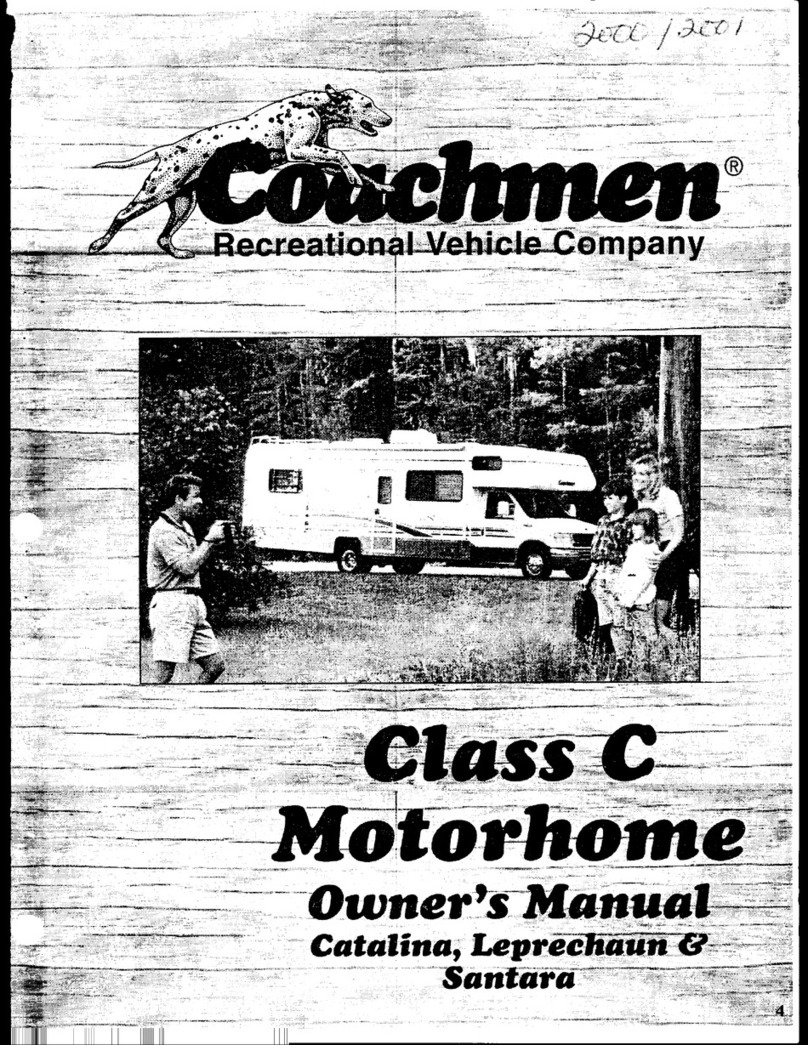
III
C22M-1EN Page
HEATING SYSTEM ....................................................................................................................................................... 3-16
STARTING THE HEATING SYSTEM ..................................................................................................................... 3-17
SETTING THE DESIRED TEMPERATURE........................................................................................................... 3-18
HOT WATER............................................................................................................................................................. 3-18
HEATING USING A 230 V SUPPLY. ....................................................................................................................... 3-19
HEATING USING BOTTLED GAS.......................................................................................................................... 3-20
WINTER CONNECTION ......................................................................................................................................... 3-21
WATER/WASTE WATER SYSTEMS .......................................................................................................................... 3-22
FILLING WITH FRESH WATER.............................................................................................................................. 3-22
DRAINING THE FRESH WATER SYSTEM ........................................................................................................... 3-23
CLEANING THE FRESH WATER TANK ................................................................................................................ 3-23
DRAINING THE GREY WATER TANK ................................................................................................................... 3-24
CLEANING THE GREY WATER TANK .................................................................................................................. 3-25
USING WATER TAPS .............................................................................................................................................. 3-26
USING THE WASTE WATER SYSTEM ................................................................................................................. 3-26
USING THE SHOWER ............................................................................................................................................ 3-26
THETFORD C263 TOILET............................................................................................................................................ 3-27
PREPARING THE TOILET FOR USE .................................................................................................................... 3-27
USING THE TOILET ................................................................................................................................................ 3-27
EMPTYING THE TOILET ........................................................................................................................................ 3-28
BATTERY CHARGING.................................................................................................................................................. 3-29
CHECKING BATTERY CHARGE............................................................................................................................ 3-29
CHARGING BATTERIES......................................................................................................................................... 3-29
SILENT MODE ......................................................................................................................................................... 3-29
DESCRIPTIONS
DESCRIPTIONS – VEHICLE.......................................................................................................................................... 4-2
CHASSIS ................................................................................................................................................................... 4-2
TOW HOOK ............................................................................................................................................................... 4-2
RUNNING LIGHTS ................................................................................................................................................... 4-2
WHEELS..................................................................................................................................................................... 4-3
SNOW CHAINS.......................................................................................................................................................... 4-3
BOTTLED GAS SYSTEM............................................................................................................................................... 4-4
BOTTLED GAS .......................................................................................................................................................... 4-4
THE BOTTLED GAS SYSTEM ................................................................................................................................. 4-4
GAS BOTTLES........................................................................................................................................................... 4-5
HOSE BREAK VALVE................................................................................................................................................ 4-6
GAS PRESSURE REGULATOR............................................................................................................................... 4-6
LEAK INDICATOR...................................................................................................................................................... 4-7
CHECKING THE BOTTLED GAS SYSTEM ............................................................................................................ 4-8
GAS PRESSURE AND TEMPERATURE ................................................................................................................. 4-8
BOTTLED GAS CONSUMPTION ............................................................................................................................. 4-8
REFRIGERATOR............................................................................................................................................................. 4-9
TURNING OFF THE REFRIGERATOR.................................................................................................................... 4-9
TRAVEL CATCH......................................................................................................................................................... 4-9
ADAPTING THE REFRIGERATOR’S VENTILATION ........................................................................................... 4-10
FAN BEHIND THE REFRIGERATOR..................................................................................................................... 4-10
GENERAL REFRIGERATOR INSTRUCTIONS..................................................................................................... 4-11
HEATING SYSTEM ....................................................................................................................................................... 4-13
GENERAL ABOUT THE HEATING SYSTEM ........................................................................................................ 4-13
THE BOILER ............................................................................................................................................................ 4-14
EXPANSION TANK .................................................................................................................................................. 4-16
HEATING SYSTEM FLUID ..................................................................................................................................... 4-17
CONVECTOR SYSTEM .......................................................................................................................................... 4-17
HEATING LOOPS IN THE FLOOR......................................................................................................................... 4-18
WINTER CONNECTION ........................................................................................................................................ 4-18
VENTILATION ............................................................................................................................................................... 4-19
FIXED VENTILATION.............................................................................................................................................. 4-19
ROOF HATCHES ..................................................................................................................................................... 4-19
KITCHEN VENTILATION ........................................................................................................................................ 4-19
CONDENSATION .................................................................................................................................................... 4-19
AIRVENT................................................................................................................................................................... 4-20
AIR CONDITIONING (AC)....................................................................................................................................... 4-20
































